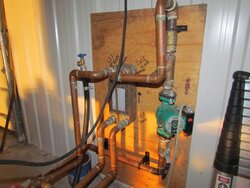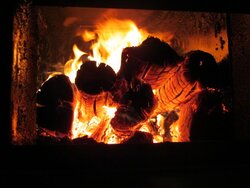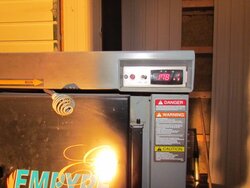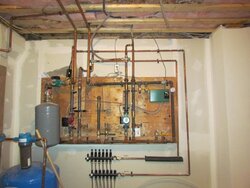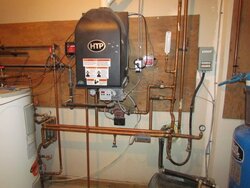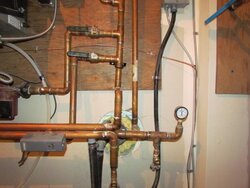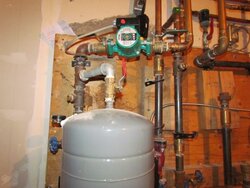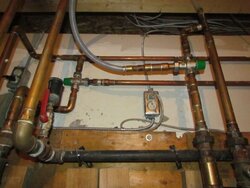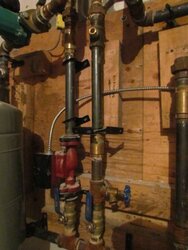I'm out of this one now - I don't have a slab so have no experience to speak from. But I don't think I'd go any higher. The thing is it takes time to get a slab totally warm, and not necessarily hotter water.
I would say you're right on the money, exactly right.
The max temp I'm putting in it is 130, how much will 4 " of concrete take?
I'm running the basement slab for storage. It does a lot for you but there is a lot going on, other factors.
I'm running a fixed, reset, basement slab water temp of 130 F. I would not go over that but running it longer, more time, makes a big difference. I poured 1200 sf of 4", 4000 psi, wire reinforced, fully floating on 2" EPS foam, and thermal breaked at the edges.There were zero cracks in the slab, but now that I'm heating it I can see a few hairline micro cracks that travel 2 to 3 ft and stop because of the steel wire mats. The cracks are few and hard to find, but were zero before the heat. I would say I'm maxing out what the slab can both absorb and emit for heat. I could bump the slab water temp up, but the next move would be tank storage.
It really depends on if you are battling the load or battling the heat loss. You may go higher on the slab temp but the downside is cracking of the slab. If you are losing too much from the slab before it gets upstairs, higher water temp will not help you there. You can moderate the house temp with the slab but another complementary method may be indicated.
I just scanned the basement slab with the IR gun and the sweep temps ranges from 83 to 96 F with 1' spacing of the PEX. Basement air temp running 73 F. The slab, all heat, was just off for ~ 9 hrs and is coming up from setback with a fire for the last hour.
Air temp in the house regularly swings from 70 to 62 F, but that's the atomic clock on the window sill, in the window 6" from the glass. IR scan of all the solid surfaces, entire house, is 64 to 67 F, just now, coming up from no heat overnight. Outside air is 27 F at 10:00 AM.
A lot depends on the heat loss, which is very low for my house, R 40 walls, R 50 ceilings, Andersen 400 windows, 2" EPS foam wrapping the exterior of the foundation.. Radiant heat is very slow, but penetrating. When the heat has been running, there are really no high or low spots, the heat penetrates and spreads out, but it takes time. Radiant stores the heat in the mass of the house, not the air, but most of the materials are insulators and it takes time while the mass of the house, the heat is travelling from warm > cool to warm > warm through insulators.
The basement slab moderates the house temp, but there is a delay getting the heat upstairs. It is weeks or months of daily firings to equalize the high and low spots in the slab. If I scan the slab in January it will read 85 to 95 F.
I would recommend both slab storage and tank, each does a little, but a lot depends on how much heat is lost from the basement before it gets upstairs.
Sorry I did not read the entire thread


